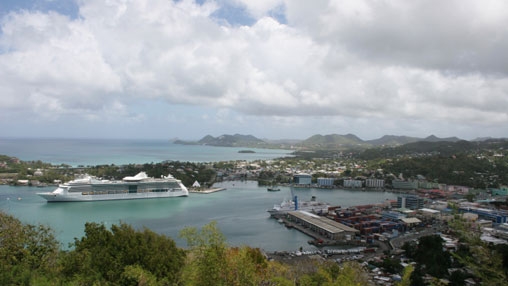Results
The goal of the project was to pilot solutions that increase awareness, improve the knowledge base of the three participating countries, and provide experience and lessons to be gradually mainstreamed into programs and plans at national and regional adaptation initiatives. The piloted projects achieved a number of key outcomes:
Saint Vincent and the Grenadines
The sea-water desalinization plant is fully operational, and the Central Water Authority is leading the construction of the distribution system, and also conducting a financial assessment to set consumer fees for the water. The plant has been connected to the electrical grid and has a nominal production capacity of over 60m3/day. More than 200 families from the Paget Farm community will benefit when the distribution system is fully completed.
An 80kW photovoltaic system is operating in Bequia. It is the largest solar system in the country, and is being used the energy utility Saint Vincent Electricity Services, to increase their experience with such systems, with the intention of promoting them at national scale.
Dominica
The Park Management Plans for Morne Diablotin (over 5 years old) and Morne Trois Pitons (over 10 years old) have been extensively reviewed and climate change issues have been mainstreamed.
Two meteorological stations have been installed in the two national parks and are producing valuable information for park management and agriculture planning.
The Ministry of Agriculture has led the implementation of a pioneer irrigation pilot in the Milton area, benefitting over 10 farmers. The pilot has produced important lessons that will benefit its replication elsewhere.
Saint Lucia
The rainwater harvesting system installed in the resort includes two storage tanks, reducing the resort’s uptake from the main potable water network.
All wastewater produced by the resort is currently being treated and reutilized for garden irrigation, with no outflow to the coast, thus protecting the biodiversity of the area.
The Marchand building, a community hurricane shelter, has been retrofitted to withstand hurricane winds, and has turned into a flagship location showcased by the Ministry of Physical Planning and Environment. All inhabitants of this underprivileged community now benefit from a shelter that is also used as community center.
Global Learning
The implementing agency, Caribbean Community Climate Change Centre, has collected lessons learned, gained global knowledge, and has captured this knowledge in technical notes posted on its web pages.
The project sent two scientists from the University of the West Indies to the Meteorological Research Institute in Japan, where they have been trained in the use of the Earth Simulator, a supercomputer devoted to climate simulation. Both scientists brought back useful results that are currently being used on a number of initiatives towards improvement for climate change models.
